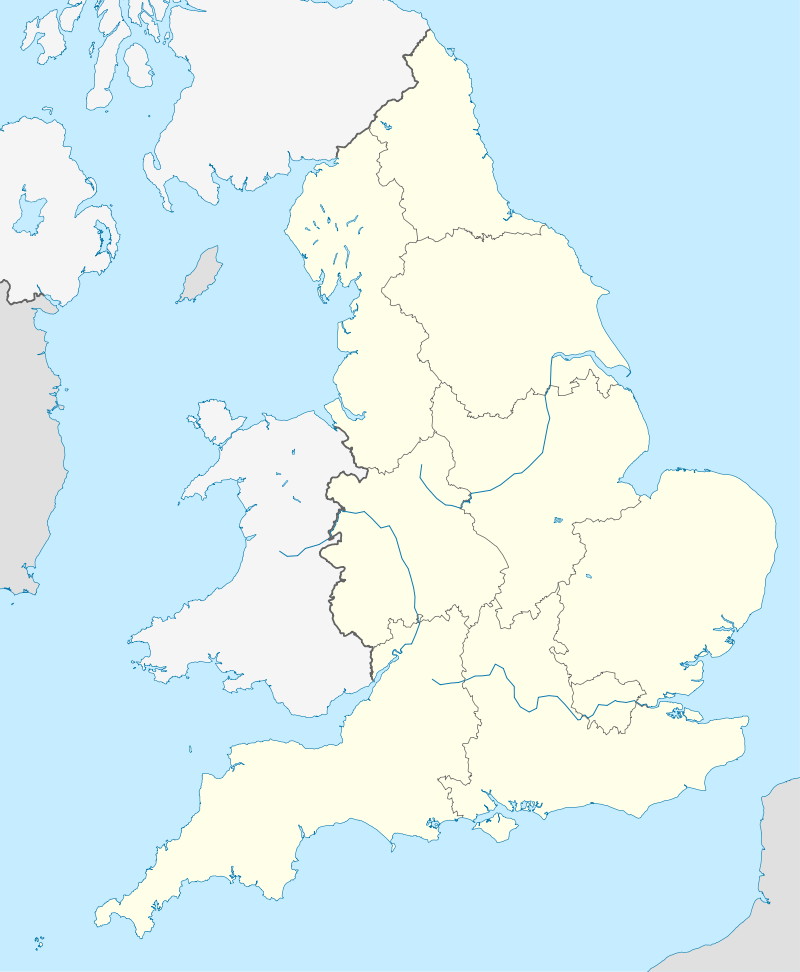Gunwalloe
Coordinates: 50°03′14″N 5°16′44″W / 50.054°N 5.279°W
| Gunwalloe Cornish: Gwynnwalow | |
|---|---|
|
Gunwalloe in relation to neighbouring parishes | |
 Gunwalloe | |
| OS grid reference | SW 6537922249 |
.jpg)
Gunwalloe (Cornish: Gwynnwalow) is a coastal civil parish and a village in Cornwall, England, United Kingdom. It is situated on the Lizard Peninsula three miles (4.8 km) south of Helston and partly contains The Loe,[1] the largest natural freshwater lake in Cornwall. The parish population at the 2011 census was 272.[2]
Gunwalloe lies within the Cornwall Area of Outstanding Natural Beauty (AONB). Almost a third of Cornwall has AONB designation, with the same status and protection as a National Park.[3]
History
Gunwalloe is considered to be the first entry for Cornwall in the Domesday Book, given that the King's manor of Winnianton is the first listing, which at the time of writing was the head manor in the hundred of Kerrier. The parish church was originally a manorial church of this manor but in the 13th century it became a chapelry of Breage. The Church of Saint Winwaloe was rebuilt in the 14th to 15th century but the tower (a separate older building which belonged to the earlier church) is perhaps 13th century.[4][5][6]
National and archaeological significance
Gunwalloe is home to a number of listed buildings, such as the Church of Saint Winwaloe[7] and Rose Cottage.[8] The wreck of what is thought to be a seventeenth-century armored cargo vessel identified as an English East Indiaman lies off Fishing Cove, one of Gunwalloe's three major beaches. The ship was supposedly on her return journey laden with an extremely valuable cargo of spices, indigo, drugs, Indian piece goods and 100 long tons (100 t) of pepper, when she was stranded near Loe Bar. Historical evidence indicates that salvage took place soon after the wrecking. Another wreck in 1525, that of the St Antony, carrying the King of Portugal's bullion, plate and silver. 45 sailors survived the wreck and for two days were helped by local people to salvage the treasure. Whereupon, three local magistrates attacked them and carried off more than £10,000 worth of goods. A legal battle ensued in the Court of Star Chamber.[9][10]
In late 2010, an early medieval site was excavated at Gunwalloe by a team of archaeologists from Exeter University and the National Trust.[11]
Recreation
.jpg)
Gunwalloe beach is used by naturists.[12][13][lower-alpha 1]
References and notes
- ↑ Location of Gunwalloe naturist beach 50°03′46″N 5°17′13″W / 50.062789°N 5.286988°W
- ↑ Ordnance Survey: Landranger map sheet 203. ISBN 978-0-319-23148-7.
- ↑ "parish population 2011 census". Retrieved 10 February 2015.
- ↑ "Cornwall AONB". Retrieved 13 August 2016.
- ↑ Cornish church guide 1925, p. 105.
- ↑ Henderson 1964, p. 77.
- ↑ Pevsner & Radcliffe 1970, pp. 75-76.
- ↑ "Gunwalloe, St Winwaloe". Retrieved 4 October 2015.
- ↑ "Rose Cottage". Retrieved 4 October 2015.
- ↑ "The National Heritage List". Retrieved 4 October 2015.
- ↑ Cathryn J. Pearce (2010). Cornish Wrecking, 1700-1860: Reality and Popular Myth. Boydell & Brewer. p. 55. ISBN 978-1-84383-555-4.
- ↑ "Cornwall Archaeological Society". Retrieved 16 August 2015.
- ↑ Smallcombe, Mike (19 July 2016). "There are plenty of nudist beaches around Cornwall...". West Briton. Retrieved 20 July 2016.
- ↑ "Berepper Beach (Loe Bar), Gunwalloe Cove, near Helston". Naturism in Cornwall. 29 September 2015. Retrieved 22 July 2016.
- The Cornish church guide. Truro: Oscar Blackford. 1925.
- Henderson, Charles (1964). The Cornish Church Guide and Parochial History of Cornwall. D. Bradford.
- Pevsner, Nikolaus; Radcliffe, Enid (1970). Cornwall. Penguin. ISBN 978-0-14-071001-4.
| Wikimedia Commons has media related to Gunwalloe. |
